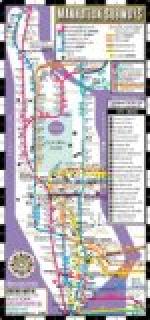The station floors are of concrete, marked off in squares. At the junction of the floors and side walls a cement sanitary cove is placed. The floors drain to catch-basins, and hose bibs are provided for washing the floors.
[Illustration: BROOKLYN BRIDGE STATION]
Two types of ceiling are used, one flat, which covers the steel and concrete of the roof, and the other arched between the roof beams and girders, the lower flanges of which are exposed. Both types have an air space between ceiling and roof, which, together with the air space behind the inner side walls, permits air to circulate and minimizes condensation on the surface of the ceiling and walls.
[Illustration: PLAQUE SHOWING BEAVER AT ASTOR PLACE STATION]
The ceilings are separated into panels by wide ornamental mouldings, and the panels are decorated with narrower mouldings and rosettes. The bases of the walls are buff Norman brick. Above this is glass tile or glazed tile, and above the tile is a faience or terra-cotta cornice. Ceramic mosaic is used for decorative panels, friezes, pilasters, and name-tablets. A different decorative treatment is used at each station, including a distinctive color scheme. At some stations the number of the intersecting street or initial letter of the street name is shown on conspicuous plaques, at other stations the number or letter is in the panel. At some stations artistic emblems have been used in the scheme of decoration, as at Astor Place, the beaver (see photograph on this page); at Columbus Circle, the great navigator’s Caravel; at 116th Street, the seal of Columbia University. The walls above the cornice and the ceilings are finished in white Keene cement.
[Illustration: EXPRESS STATION AT 14TH STREET, SHOWING ISLAND AND MEZZANINE PLATFORMS AND STAIRS CONNECTING THEM]
[Illustration: WEST SIDE OF COLUMBUS CIRCLE STATION (60TH STREET)—ILLUMINATED BY DAYLIGHT COMING THROUGH VAULT LIGHTS]
[Illustration: CARAVEL AND WALL DECORATION]
The ticket booths are of oak with bronze window grills and fittings. There are toilet rooms in every station, except at the City Hall loop. Each toilet room has a free closet or closets, and a pay closet which is furnished with a basin, mirror, soap dish, and towel rack. The fixtures are porcelain, finished in dull nickel. The soil, vent and water pipes are run in wall spaces, so as to be accessible. The rooms are ventilated through the hollow columns of the kiosks, and each is provided with an electric fan. They are heated by electric heaters. The woodwork of the rooms is oak; the walls are red slate wainscot and Keene cement.
Passengers may enter the body of the station without paying fare. The train platforms are separated from the body of the station by railings. At the more important stations, separate sets of entrances are provided for incoming and outgoing passengers, the stairs at the back of the station being used for entrances and those nearer the track being used for exits.




